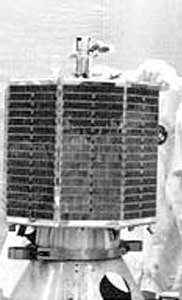Re-post from ANS-315
As AO-7, launched on November 15, 1974, approaches is 50th Anniversary and setting a record as the longest operating satellite, we look back at a few of its noteworthy accomplishments.
The downlink spectrum of AO-7’s UHF/VHF transponder overlapped with AO-6’s VHF-to-HF transponder. The overlap of the two was approximately 50 kHz wide. The two orbits were the same – almost. AO-7’s mean motion was slightly higher than that of AO-6, which means, once every year of so, AO-6 will “lap” its younger sibling in space. During the time when the two spacecraft are in closer proximity, it was already known to be theoretically possible (if AO-7 has its UHF/VHF transponder on) for one user to communicate through two spacecraft in succession, with the downlink of AO-7’s transponder being relayed through AO-6’s VHF/HF transponder uplink, and then, with the doubly relayed signal arriving on 29.5 MHz to another user on the ground. This could be done, in certain geometries, in both directions, making a two-way double-hop communications possible.
The first successful Earth-Space-Space-Earth relay of this type took place on January 6, 1975. This happened early in AO-7’s “first” lifetime and during the first occasion when AO-6 approached AO-7, in their very similar orbits. The two stations were both located in the state of Texas – one in Dallas and one in Richardson. This method of communications was also conducted and reported by 55 other user stations from 12 countries during 1975. These events were documented in the IEEE Proceedings in October of 1975.
See another AO-7 50 Year Anniversary highlight in next week’s ANS Weekly Bulletin.

